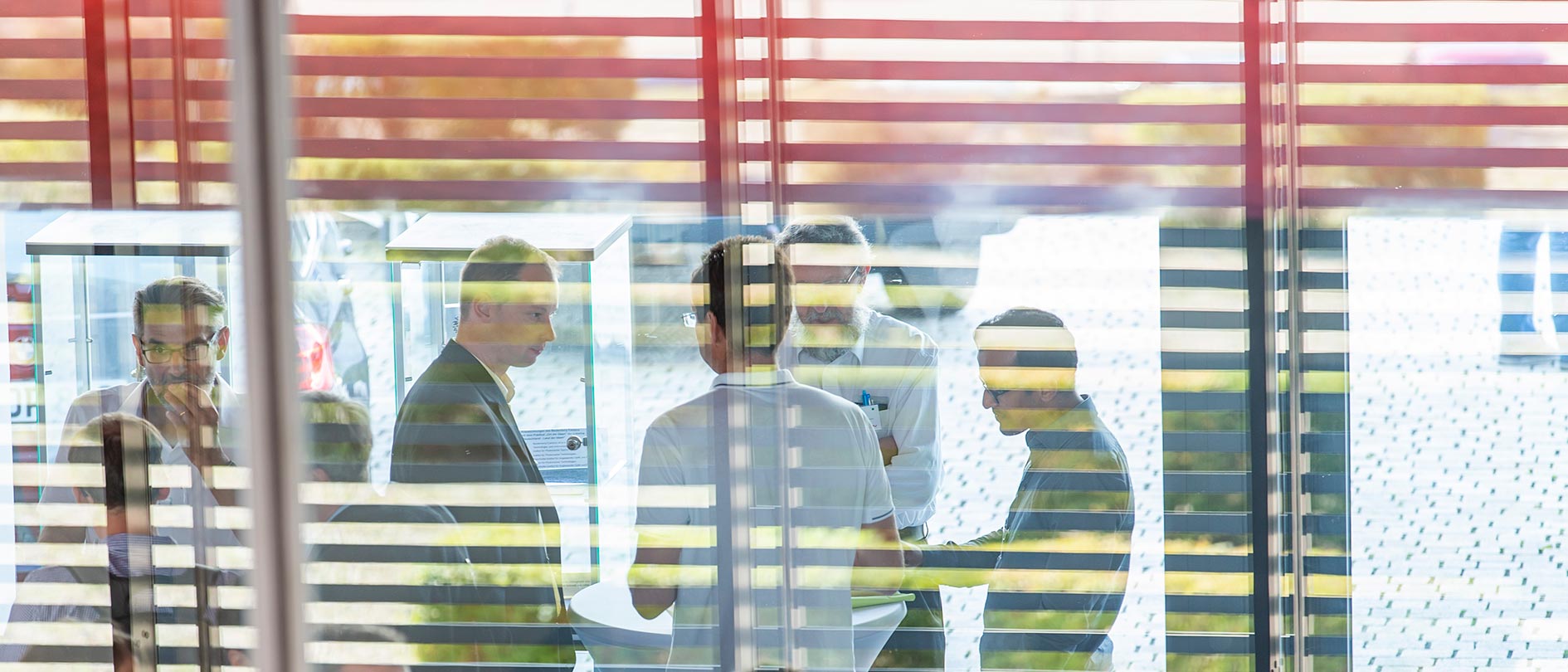The communication of the future is to become more secure with the help of light particles. This is the goal of the QuNET initiative by the BMBF. The initiative’s partners – the Max Planck Institute for the Physics of Light, Friedrich Alexander University Erlangen-Nuremberg, the DLR Institute of Communications and Navigation, and the two Fraunhofer Institutes for Applied Optics and Precision Engineering IOF and the Heinrich Hertz Institute HHI – have now taken an important step toward quantum-safe networks: With a key experiment, they have shown how multiple quantum-secured point-to-point links can be realized and combined for future scalable quantum-safe networks. They not only combined transmissions of quantum keys via free-space and fiber links, but also achieved transmission rates in the kilobit range per second in daylight.
»One goal of the key experiment was to demonstrate the distribution of quantum keys in heterogeneous ad-hoc links in daylight,« explains Dr. Thorsten Goebel, coordinator in the QuNET Office at the Fraunhofer Institute for Applied Optics and Precision Engineering IOF. »Heterogeneous in this case means that we distribute quantum keys between two points with a combination of free-space and fiber links to bridge fiber gaps. And all of this with an ad-hoc character, i.e., establishing the connection as quickly as possible.«
Test bed over two kilometers in the urban area of Jena
In this specific case, the researchers established a quantum-secured connection on a nearly two-kilometer-long test track in Jena. The quantum key distribution was implemented in two stages: The journey began on the roof of the Jena public utility company. There is a green container with a telescope for sending quantum keys in its belly. From here, light particles, which form the basis for generating a highly secure quantum key, first fly over 1.7 kilometers as the crow flies to the Beutenberg Campus Jena. There, they are picked up by a receiving station in another container on the grounds of the Fraunhofer Institute. From this intermediate node, the signal is fed into a fiber link and forwarded via 300 meters of fiber to a building adjacent to the institute. There, a quantum key is finally generated from the measurements on the light particles.
Even in the case of longer transmission distances i.e., when a direct distribution of quantum keys is not possible, the researchers have taken precautions: By suitably combining keys at trusted intermediate stations along these longer distances, the key distribution becomes possible over even greater distances.
Mobile quantum link allows bridging of fiber gaps
»Our key experiment thus demonstrates how the combination of multiple links can succeed in bridging fiber gaps, i.e., distances where the lack of lines makes fully fiber-based transmission impossible,« Dr. Goebel continues. »An often-cited example here would be a summit in rural regions with patchy fiber infrastructure.« But natural boundaries, such as bridging a river, are also a conceivable application scenario for a point-to-point connection between transmitter and receiver that can be established for a short time.
Another important aspect of the experiment is its mobile character. The two quantum containers used by the researchers, also called QuBUSes, are basically transportable. They could, for example, be taken to any location by a vehicle and could establish a quantum-secured connection there as needed. In this way, quantum communication can be implemented at the most diverse locations.
Researchers achieve key generation rates in the kilobit range
With their experiment, the researchers also achieved key generation rates in the kilobit range per second, even in direct midday sunlight. The researchers thus also achieved an important criterion for practical use, because intense solar radiation usually impairs the exchange of quantum-based keys. In many experiments, the quantum keys were therefore distributed at night and pre-stored for daytime communication. With the development of special filters, daytime key generation is now possible.
In addition, one aspect of this experiment was the demonstration of hybrid quantum key distribution. This involves the simultaneous implementation of different protocols for key distribution, which was thus able to demonstrate the agility of the developed infrastructure, in particular the QuBUS platform, in terms of the protocols used. This is important, since the development of quantum key distribution still offers many possibilities for expansion, and these should not be restricted by the infrastructure used. Thus, the developed infrastructure is also future-proof and can be used for any protocols of quantum key distribution without major adaptations.
For this purpose, protocols for quantum key distribution were also tested, which measure the electric fields instead of individual light particles. The researchers were able to show that this approach, which is very close to the technology used in classical telecommunications, is suitable for quantum key distribution without additional filters even in the case of fluctuating transmission channels of the free-space link in daylight.
First quantum-secured videoconference already realized in 2021
The experiment in Jena is the second public demonstration of technology development in the QuNET initiative: QuNET researchers had already successfully implemented a quantum-secured videoconference between two federal agencies in August 2021. At that time, a connection between the Federal Ministry of Education and Research and the Federal Office for Information Security (BSI) was implemented.
Under the following link you will find the complete press release (incl. FAQ on the QuNET initiative) as well as press images: https://s.fhg.de/QuNET-SE1-2023
